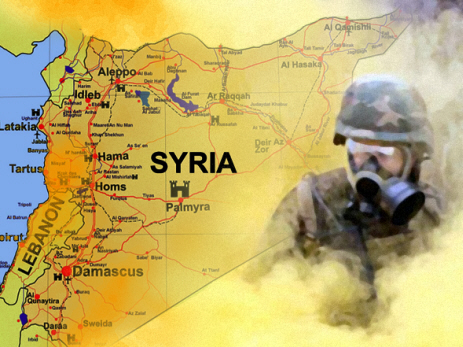Global Research, September 13, 2013
The paucity of revealed facts highlights the reality that little is really known about the actual attack. There is still no agreed upon number of fatalities, with unverified claims ranging from the US assertion of 1,429 fatalities to the French assertion that only 281 were killed. In other words, the French Intelligence number is about 20 percent that of the US assertion. Most Syrian opposition sources now put the number of fatalities at between 335 and 355, as does the non-governmental organization, Doctors Without Borders/Médecins Sans Frontières (MSF). This is about 25 percent of the US number. Either way, this is too huge a gap not to be explained and substantiated.

It is still not clear what type of agent killed the victims.
To-date, the US position in documents submitted to Congress is that the victims died as a result of “nerve agent exposure”. Orally, however, Secretary Kerry claimed the US has proof it was sarin. The French intelligence report also attributes the deaths to “chemical agents” without further identification. The most explicit finding to-date comes from the UK’s Defence Science Technology Laboratory. Soil and cloth samples “tested positive for the nerve gas sarin”. The sarin in the cloth was in liquid form that soaked into the cloth. As discussed below, this finding reinforces the conclusion that “kitchen sarin” was used. Hence, so much will depend on the UN’s findings when their tests are completed.
The claim that the agent used was a “military sarin” is problematic because military sarin accumulates (like a gaseous crystal) around the victims’ hair and loose threads in clothes. Since these molecules are detached and released anew by any movement, they would have thus killed or injured the first responders who touched the victims’ bodies without protective clothes, gloves and masks. However, opposition videos show the first responders moving corpses around without any ill effects. This strongly indicates that the agent in question was the slow acting “kitchen sarin”. Indeed, other descriptions of injuries treated by MSF – suffocation, foaming, vomiting and diarrhoea – agree with the effects of diluted, late-action drops of liquified sarin. The overall descriptions of the injuries and fatalities treated by MSF closely resemble the injuries treated by the Tokyo emergency authorities back on March 20, 1995. The Tokyo subway attack was committed with liquified “kitchen sarin”. The know how for this type of sarin came from North Korean Intelligence, and is known to have been transferred, along with samples, to Osama bin Laden in 1998. That the jihadist movement has these technologies was confirmed in jihadist labs captured in both Turkey and Iraq, as well as from the wealth of data recovered from al-Qaida in Afghanistan in 2001/2.
As well, it is not yet clear what weapons were used to disperse the chemical agent. The specifics of the weapon will provide the crucial evidence whether this was a military type agent of the kind available in the Syrian arsenal, or improvised, kitchen-style agent of the type known to be within the technical capabilities of the jihadist opposition.
Meanwhile, the mangled projectiles shown by the opposition, and which were tested by the UN inspectors, are not standard weapons of the Syrian Armed Forces. These projectiles have a very distinct ribbed-ring fins which are similar to projectiles used by the opposition in Aleppo, Damascus, and other fronts with both high-explosives and undefined materials. The Middle East Media Research Institute (MEMRI) retrieved a video claiming to be of the attack, but is most likely of a daylight testing of the launcher. The truck-mounted launcher included a chemical sleeve that was supposed to absorb leaks from the improvised warheads and not harm the launch crew; hardly the precaution taken with a military weapon.
Author: Yossef Bodansky
| Born | Israel |
|---|---|
| Occupation | Director of the Congressional Task Force on Terrorism and Unconventional Warfare (1988-2004), Director of Research of the International Strategic Studies Association, Senior Editor for the Defense and Foreign Affairs' |
Also, see more about the author:
